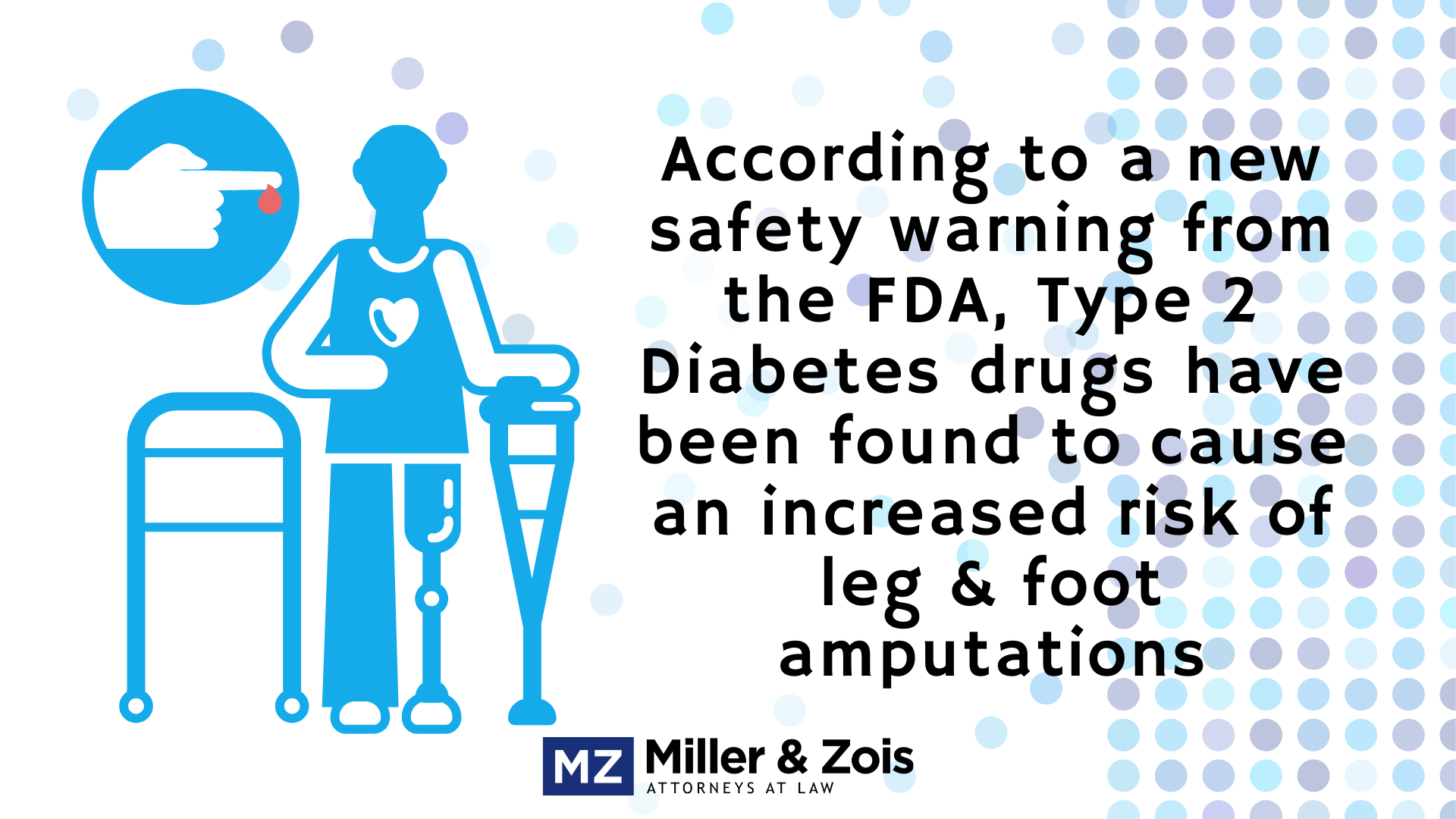A November 2018 article in the BMJ reported a study concluding what many lawyers have known for a long time: patients who use sodium-glucose cotransporter 2 (SGLT2) inhibitors are twice at risk of having lower limb amputations than other diabetes medications. The scientists also reported that SGLT2 inhibitors are also linked to diabetic ketoacidosis.
What Are SGLT2 Inhibitors?
Sodium-glucose cotransporter 2 (SGLT2) inhibitors are medications that lower blood sugar in adults who have type 2 diabetes. They are used to complement diet and exercise. SGLT2 inhibitors may be available as a single-ingredient product or combined with other diabetic medications including metformin. They reduce the amount of glucose being absorbed by the body through the kidneys. This helps to reduce blood sugar by removing excess glucose through urine.
Examples of SGLT2 inhibitors
- Dapagliflozin, which is sold as Farxiga. The FDA initially approved it in January 2014. Many people seem to think there has been a Farxiga recall but the drug has not been recalled.
- Empagliflozin, which is sold as Jardiance. It also decreases the risk of heart disease in people with type 2 diabetes. Jardiance was approved by the FDA in August 2014.
- Canagliflozin sold as Invokana. When canagliflozin is combined with metformin, an antihyperglycemic drug, it is sold as the brand names Invokamet or Invokamet XR. The FDA approved in March 2013, which made it the first SGLT2 inhibitor available in the United States.
Side effects of SGLT2 inhibitors
According to the FDA, Farxiga, Jardiance, and Invokana have many of the same side effects. They include hypotension, ketoacidosis, acute kidney injury, renal function impairment, hypoglycemia, and genital mycotic infections.
However, the FDA reports that only Farxiga was linked to amputations and bone fractures. They made this announcement around May 2017. This may be outdated, as a recent study reported links between SGLT2 inhibitors and amputations. Both Farxiga and Jardiance were included in the study, besides Invokana.
SGLT2 inhibitors and amputations
Amputations are not an uncommon complication resulting from diabetes. A small cut, blister, or crack in a diabetic’s skin may lead to an ulcer. The ulcer could eventually become severe enough that it could lead to an amputation in the area where the ulcer was found. While amputations may still happen, Invokana has been reported to increase the likelihood of amputation in diabetics than just diabetes alone. Two related studies discovered that there were higher rates of amputations in patients who took canagliflozin compared to patients who only took a placebo. However, the studies did not look at how SGLT2 inhibitors might cause amputations. A June 2017 Forbes article speculates that SGLT2 inhibitors thicken the blood, which might cause it to build up significantly in the foot.
SGLT2 inhibitors and ketoacidosis
Ketoacidosis is a condition when the body burns fat very rapidly. It does this by producing ketones, an acidic substance, in the bloodstream. Ketones are produced when your body does not have enough insulin to convert sugar into energy. The combination of high ketone and blood sugar levels can negatively impact kidney and liver functions, which has the potential to be life-threatening. SLGT2 inhibitors have been known to cause ketoacidosis.
November 2018 BMJ article
Conducted by scientists from Sweden, Norway, and Denmark, the study aimed to examine possible serious adverse effects from taking SGLT2. The scientists gathered data from the national health and administrative registers in Sweden and Denmark. They looked at data from July 2013 to December 2016.
The patients examined took one of three different SGLT2 inhibitors. Sixty-one percent of patients took Farxiga, thirty-eight percent took Jardiance, while one percent took Invokana. The scientists hoped to compare SGLT2 inhibitors to glucagon-like peptide 1 (GLP1) receptors, another group of diabetic medications that lower blood sugar.
Their goal was to determine whether or not SGLT2 inhibitors are associated with a higher risk of seven different adverse side effects than GLP1 receptors. The seven side effects they hoped to examine were lower limb amputations, bone fractures, diabetic ketoacidosis, acute kidney injury, severe urinary tract infection, venous thromboembolism, and acute pancreatitis.
Through their analysis of the Swedish and Danish registers, patients who use SGLT2 inhibitors were at a higher risk of experiencing lower limb amputations and diabetic ketoacidosis. However, SGLT2 inhibitors were not associated with the other five side effects the scientists hoped to look at.
What makes these results interesting is that they might provide a better understanding of SGLT2’s side effects. In an article I wrote two months ago, I previously noted that Jardiance was a safer alternative to Invokana. I even provided a link to a study that concluded that Jardiance was not associated with lower-limb amputations.
However, Jardiance accounted for thirty-eight percent of the patients in the cohort. This does not necessarily mean that Jardiance increases the risk of amputation, but the study shows that SGLT2 inhibitors, in general, are more likely to increase the risk than other diabetic medications. The study also noted that they need to study further to determine whether SGLT2 inhibitors in general increase lower limb amputation risk or only specific ones do.
I am taking an SGLT2 inhibitor, what should I do?
If you are currently taking an SGLT2 inhibitor, you should contact your doctor to determine if you might be at increased risk of developing complications such as amputations or diabetic ketoacidosis. Only stop taking your medication if your doctor tells you to do so. Otherwise, please continue taking it. While taking it, continue reading up on SGLT2 inhibitors. Read up on recent studies that should inform you of these medications and their effects. If you have suffered an amputation, you want to contact a lawyer as soon as possible.
- Information on Jardiance recall in 2020
 Lawsuit Update Center
Lawsuit Update Center



